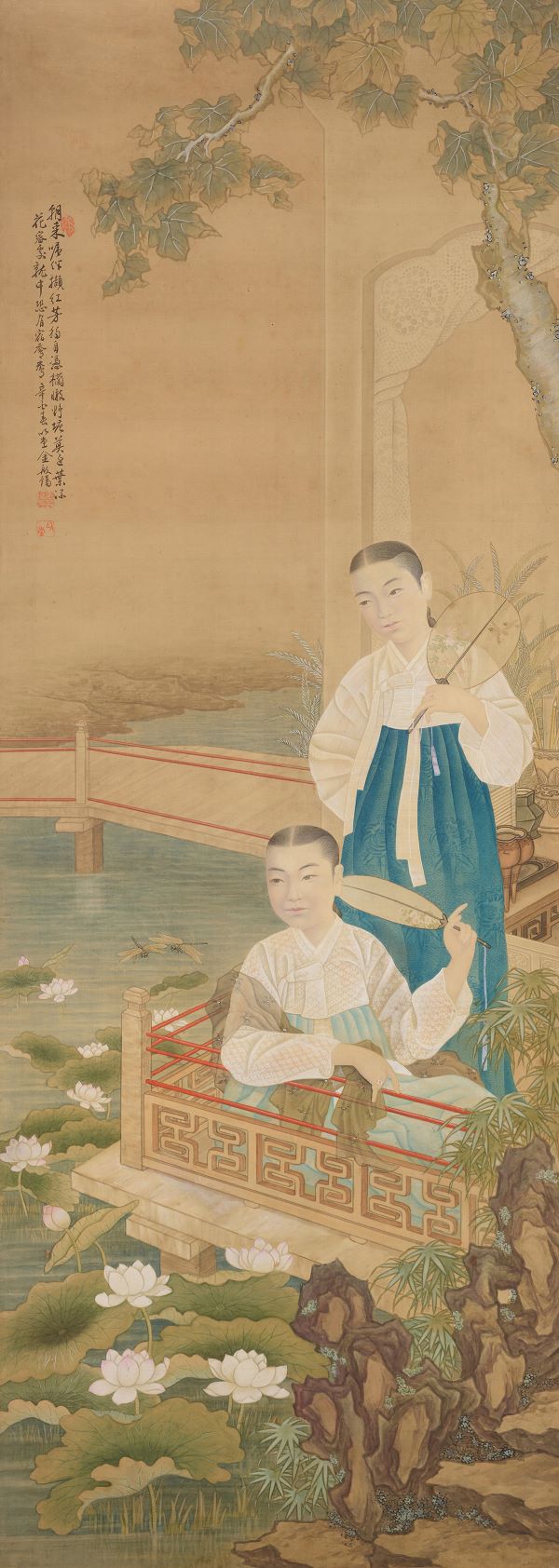
Yoon Hee-soon, Studies on Joseon Art, 1946, National Hangeul Museum
Yoon Hee-soon
* Source: Multilingual Glossary of Korean Art. Korea Arts Management Service
Find More
-

Kim Yongjin
Kim Yongjin (1878-1968, pen name Yeongun or Guryongsanin) was appointed as a guard of a prince, a military officer’s ninth-class position, and later in his career rose to a second-class position. However, he retired early to focus on his art, which included traditional ink style calligraphy, four gracious plants paintings, and literati painting. His calligraphy and four gracious plants paintings were selected for the first to third Joseon Art Exhibitions [Joseon misul jeollamhoe]. He consistently submitted his works to the Calligraphy and Painting Association [Seohwa hyeophoe] as a member. He served as a judge of the Calligraphy Division from the first to the sixth National Art Exhibitions (Gukjeon), was a president of the Oriental Calligraphy Institute, and won a Seoul City Culture Award. Kim Yongjin was also a prominent collector of Painting and Calligraphy during and was skilled at Anjingyeong style regular script, clerical script, and semi-cursive script. His Indian ink orchid paintings emulated the style of Min Yeongik. He began drawing fruit and flower paintings, such as peonies, magnolias, and pomegranates after being influenced by Shanghai literati flower paintings in the late 1920s.
-

Kim Eunho
Kim Eunho (1892-1979, pen name Yidang) joined the Calligraphy and Painting Society (Seohwa misulhoe) in 1912 and learned Oriental painting under An Jungsik and Cho Seokjin. He was known for his sophisticated brush strokes and attention to detail. Early in his career he was appointed as a court portrait painter. He produced several portraits of kings from the Joseon dynasty and gained a reputation for his portraits and colored figure paintings. He contributed his works to the first exhibition of the Calligraphy and Painting Association (Seohwa hyeophoe) and the Joseon Art Exhibition. His trainees organized Husohoe in 1936, which contributed enormously to the Modern Oriental Art community in Korea. However, he was accused of pro-Japanese activities due to his overt acquiescence to Japanese Imperialism and his involvement in its wartime propaganda. He tried his hand at ink paintings in the 1950s and experimented with modernized colored landscape painting from the 1960s into his later years. In the 1960s, he painted several portraits of historic figures and published Hwadanilgyeong (1968) and Seohwabaeknyeon (1977).
-

Ko Yuseop
Ko Yuseop (1905-1944, pen name Uhyeon, nom de plume Geubwoldang) is widely considered the first Korean art historian to receive a Western style tertiary education. He studied Aesthetics and Art History at the department of philosophy, Keijo Imperial University. He served as a director of the Kaesong City Museum from 1933 to 1944. He studied Korean pagodas and Goryeo celadons based on Positivism and Formalism. He was a foundational contributor to the creation of a modern academic Korean history of art that featured Buddhist art and Korean painting. He described the aesthetic consciousness of Korean art as “a great savory flavor” or “technique without technique.” His thoughts strongly influenced later generations of Korean artists. His major books include Goryeo Celadon, Studies on Korean Pagodas, The Collected Volume of Korean Art History, Studies on Korean Art History and Aesthetics, and Historical Sites in Songdo.







